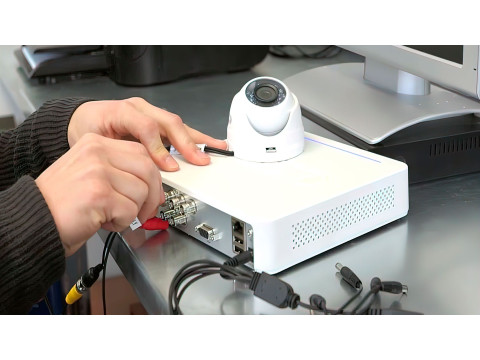Stationary Video Recorders and Their Installation
For Home and Office
For Vehicles
What is a Stationary Video Recorder?
A stationary video recorder isn’t always a bulky, heavy device. Generally, it refers to recorders used with external surveillance cameras. These are compact block-like devices, often weighing just a few kilograms.
They are usually "stationary" because they are connected to cameras with cables, but wireless cameras can eliminate this limitation. Still, these recorders are rarely moved, even when wireless systems are used.
True stationary systems include recorders mounted in special racks, such as:
- DVRs (Digital Video Recorders)
- NVRs (Network Video Recorders)
DVR Systems:
Typically support 4, 8, or 16 cameras, with each camera connected to its own channel. DVRs are often classified by the number of channels: 4-channel, 8-channel, 16-channel, etc.
NVR Systems:
Support a larger number of cameras, often working within a networked environment.
When choosing a stationary recorder, important factors include:
- Resolution capabilities
- Recording speed
- Number and capacity of supported hard drives (HDDs)
- Supported technologies like AHD, CVI, or TVI, which determine compatibility with specific camera types.
Some recorders are multi-format but may not always be practical. If the cameras remain the same, a single-format recorder is often sufficient.
Tip: Always choose cameras first, then select a compatible recorder.
Video Recorders for Home and Small Offices
For small-scale systems like home setups or small offices, analog-based technologies such as AHD, CVI, or TVI are often the most practical choice. Among these, AHD systems are particularly popular.
Why Choose AHD?
- AHD recorders support resolutions of 1MP or 2MP.
- For most homes or small offices, 1MP is sufficient, but a 2MP recorder offers better image quality without a significant price increase.
Note: Higher resolution requires more HDD storage. Use a storage calculator to determine the necessary capacity.
Modern recorders typically include essential features, so the choice is often straightforward.
Stationary Video Recorders for Vehicles
Vehicle-based stationary recorders connect to multiple external cameras and are designed for specific applications such as:
- Public transportation (monitoring road and cabin activities).
- Driving schools (providing comprehensive video feedback).
- Heavy-duty and specialized vehicles.
Key Features of Vehicle Recorders:
- Multichannel Support: Requires significant storage for recording high volumes of data.
- Durable Storage: SSDs are preferred over HDDs to handle vibrations but are more expensive.
- External Cameras: Installation can be challenging, especially for hidden placements.
Due to their complexity, stationary vehicle recorders are primarily used professionally. They:
- Have high costs.
- Require professional installation.
- Need regular maintenance.
Some enthusiasts install these systems on private vehicles for 360° monitoring, both while driving and parked.
Stationary video recorders, whether for home, office, or vehicles, offer tailored solutions for various needs, balancing advanced technology with practical installation.

